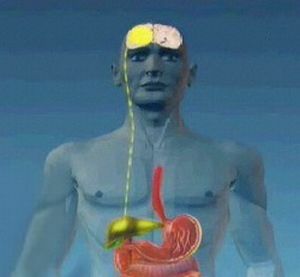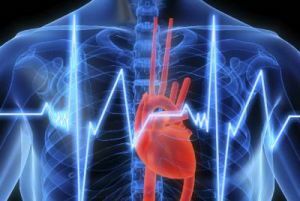 Sharp deterioration in health, exacerbation of any chronic disease( including neuralgic) and its inconstancy testifies to serious problems that could portend paroxysm or paroxysmal condition.
Sharp deterioration in health, exacerbation of any chronic disease( including neuralgic) and its inconstancy testifies to serious problems that could portend paroxysm or paroxysmal condition.
Paroxysmal condition is a serious pathological deviation that occurs due to a certain type of disease, and which is of primary importance in the compilation of a general clinical picture.
In other words, the paroxysmal condition is an attack of neuralgic origin, which manifests itself when the chronic disease worsens. This condition is characterized by suddenness, short duration and a tendency to repeated manifestation.
Content
- Groups provoking diseases
- vegetative paroxysms
- Causes and provocateurs
- What triggers autonomic paroxysms
- most common symptoms
- complex measures
- Varieties manifestations
- Paroxysmal reaction
- disturbance of consciousness with paroxysms
- First aid and treatment
Groups provoking diseases
Paroxysmal disorders are divided intoseveral groups.
Paroxysm or paroxysmal condition that could be caused by activation of an inherited disease:
- , hereditary degeneration of the nervous system , which has a systemic form: Wilson-Konovalov's disease;Muscular dystonia, leading to pathological changes in muscle tissue;Tourette's disease;

- metabolic disorder , which can be transmitted by inheritance: phenylketonuria;histidemia;
- deformation of the exchange lipid tracts : amavrotic idiocy;Gaucher's disease;leukodystrophy;mucolipidosis;
- dysfunction in the functioning of the phacomatosis : neurofibromatous changes in the name of Recklinghausen;tuberous sclerosis of Burneville;
- various muscular disorders and nervous system damage - acute paroxysmal myoplegia;myopligic syndrome in paroxysm;the epileptic state of Unferricht-Lundborg;
- acute epileptic seizures .
Paroxysmal syndrome caused by another neuralgic disease:
- nervous system disease : posttraumatic disorder, crisis or epilepsy;
- benign and malignant neoplasms : paroxysmal conditions that were caused by neuralgic or vestibular disorders due to brain tumors;
- vascular disorders in the nervous system : stroke of varying degrees;cerebral crisis;anomaly in the work of vessels;
- organic diseases of the central nervous system ;
- associated with infectious CNS disease : meningitis, encephalitis and others.
Paroxysmal conditions caused by diseases of the internal organs: 
- cardiovascular diseases ( heart paroxysm): heart attack, stroke, heart disease, heart palpitations;
- kidney and liver diseases : hepatitis, colic and uremia;
- respiratory organs diseases : pneumonia, asthma, inflammatory processes.
- blood disease : hepatitis, diathesis, anemia.
Paroxysm developed on the background of disruption of the endocrine system:
- pheochromocytoma;
- paralysis;
- disease Itenko - Cushing.
Paroxysmal syndrome in metabolic diseases and intoxications:
- hypoxia;
- alcoholic or food intoxication.
Paroxysm, which develops as part of a psychological disorder: a vegetative vascular crisis or a disruption in the functioning of the body's main functions( this classification is discussed below).
Vegetative paroxysms
In the medical literature, vegetative paroxysms are divided into two groups: epileptic and non-epileptic, and they, in turn, are broken down into the following classifications.

Epileptic autonomic paroxysms:
- diseases that develop against a background of non-epileptic disorders;
- disease, which developed against the background of disruption in the central nervous system, including, with epilepsy and other neuralgic and psychological disorders.
Non-epileptic paroxysms, in turn, are divided into the following groups:
- paroxysms caused by disruption of the functioning of the rhinencephalic structures;
- paroxysmal disorders on the background of disruption of hypothalamic structures;
- disorders in the caudal region are also a significant cause of paroxysmal development.
Causes and provokers
Vegetative paroxysms can develop against the background:
- of mental disorders;
- of neuralgic diseases;
- disorders in the operation of blood vessels( vascular dystrophy).
What provokes vegetative paroxysms
Some genetic pathologies are capable of provoking the emergence of autonomic paroxysms - an unexpected increase in systemic degenerations of the nervous system, the development of metabolic disorders and epileptic conditions:
- of Wilson-Konovalov disease( hepatocerebral dystrophy);

- of Tourette's syndrome( hereditary disease, manifested by motility tics);
- phenylketonuria( severe genetic disorder of amino acid metabolism);
- of Gaucher disease( glucosylceramide lipidosis);
- leukodystrophy( violation of the myelination process);
- glycogenoses( hereditary defects of various enzymes);
- galactosemia( genetic impairment of carbohydrate metabolism).
In the first row of organic pathologies of the central nervous system with paroxysmal vegetative disorders are:
- causalgic syndrome - the presence of burning painful pains;
- effects of craniocereberal trauma;
- post-traumatic cerebrosthenic syndrome;
- tumors of the brain and spinal cord;
- pathology of cerebral vessels;
- ischemic stroke;
- neuralgia of the upper laryngeal, trigeminal, glossopharyngeal nerves.
Paroxysmal conditions characterize a number of manifestations of the syndrome of vegetative dystonia: 
- neuralgia of the nasolacaryngeal nerve( Charlene syndrome);
- pathology of the wing-palatal node( Sluder's syndrome);
- of neuroses;
- of migraine;
- of depressive disorders;
- hysteria;
- affective states.
Also vegetative paroxysms are characteristic for pathologies of visceral organs:
- congenital cardiac pathology;
- cardiac necrosis;
- hepatitis;
- a violation in the work of such vital organs as the liver and kidneys;
- pneumonia.
In addition, abnormalities in the functioning of the endocrine system and metabolic disorders can also trigger an attack of
- hypoxia;
- Cushing's Disease.
Infectious meningitis, complications after the introduction of the vaccine and the ingestion of parasites into the body can cause paroxysm.
Detailed review of the classification of paroxysm can be seen that the causes of its occurrence are quite diverse( from ordinary poisoning to blood disease).
Paroxysm is always closely related to that organ, the functioning, which was disturbed in connection with this or that pathology.
Most common symptoms of
Symptomatic of attack:
- general malaise, weakness, vomiting;
- lowering blood pressure;
- disruption in the operation of the gastrointestinal tract;
- epileptic seizures;
- fever, chills and shivering.
- emotional tension.
Complex of measures
 Effective treatment of autonomic paroxysms requires an integrated approach that combines: a thio-logical, pathogenetic and symptomatic treatment complex.
Effective treatment of autonomic paroxysms requires an integrated approach that combines: a thio-logical, pathogenetic and symptomatic treatment complex.
As a rule, for the treatment of paroxysm and paroxysmal conditions, similar medications are used, which are prescribed by the attending physician. These include: stimulating, resorptive and dezallergiruyuschie drugs.
They increase the activity of the vegetative and nervous system of the human body. In addition, in the treatment of a variety of autonomic seizures, a large place belongs to psychotherapy.
Species of
manifestations The state of paroxysm is rather difficult to tolerate by a person and lasts for several hours. This condition is characterized by general malaise and instability of the whole organism( the condition can be accompanied by unreasonable fear and aggression).
Paroxysmal reaction
Paroxysmal reaction is a physiological phenomenon that marks a disorder of a certain kind that develops on the basis of a neuralgic disease.
Paroxysmal reaction is a violation in the work of the cerebral cortex, which affects the activity of the hemispheres and is characterized by a sharp start and the same sudden termination.
Consciousness disorder with paroxysms
Paroxysmal consciousness disorder is a short and sudden disorder of consciousness that occurs on the basis of neuralgic diseases.
It should also be noted that paroxysmal disorders of consciousness are characterized by epileptic seizures and unreasonable aggression.
First aid and treatment of
The first aid for paroxysmal condition depends directly on the patient's condition. As a rule, for the fastest withdrawal of  paroxysm, a lidocaine solution is used, which is administered intramuscularly as an injection.
paroxysm, a lidocaine solution is used, which is administered intramuscularly as an injection.
In case of vegetative disorders, complex treatment( thiologic, pathogenetic and symptomatic treatment complex) should be used. The same principle of treatment is used for paroxysms and paroxysmal conditions, which are caused by other diseases.
The main goal of therapy is the impact on the paroxysm causing disease.
Prevention of seizures is also very important, which consists in avoiding stresses and the correct mode of the day and lifestyle, which has a beneficial effect on the entire body.



